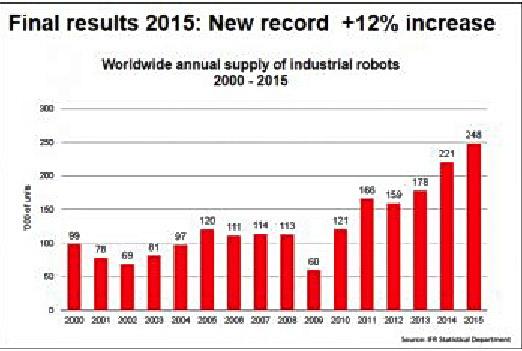Five Important New Trends in Robotics
Submitted by tatwood on Wed, 07/06/2016 - 14:28

Five emerging trends in robotics point to the shape of things to come across all of automation. These emerging trends deserve the attention of roboticists everywhere. As identified by respected industry commentator, Frank Tobe of TheRobotReport.com, these are (1) China's appetite to acquire and build an in-country robotics industry, (2) Collaborative robotics, which are beginning to impact the overall industry, (3) Robotics-as-a-Service (RaaS), now emerging in multiple verticals, (4) The impact of new robotic tech in logistics and materials handling, and (5) continued interest in investing in robotics.
Frank notes that over the last half century, industrial robots have "picked the low-hanging fruit of manufacturing by handling the dull, dirty and dangerous tasks. But today, as consumers want more personalied products, and want them faster, and as costs have dropped and executives have pushed for greater productivity through automation, mobile and vision-enabled robots are emerging and being deployed in many new application areas, particularly for SMEs [small and medium size enterprizes] and in logistics." Vision enabled enabled are also rapidly growing in use by government agencies and by agriculture, surveying, construction and healthcare markets.
Analysis of 752 startup companies indexed in TheRototReport's global database of robotics shows that 25% of these were focused on industrial robotics. Significantly, 75% addressed new areas including unmanned aerial, land, maritime and underwater applications involving filming, surveillance, reconaissance and delivery systems for the military, science and oil and gas industries (25%), agricultural robots (6%), mobile robot platforms (7%), personal service robots (3%), and professional service robots (7%). This analysis is not to be missed, as Tobe's report also parses out other important markets including consumer robots used in the home (9%) and education and hobby segments (5%). He continues, "Support businessses such as AI and software, engineering and design, component manufacturing, 3D printing, vision systems and integrators make up the remainder. More than half of the startups are predominantly software based and indicative of the new metric that the hardware component represents less than 1/3 the overall cost of the product." Read the full report here.
